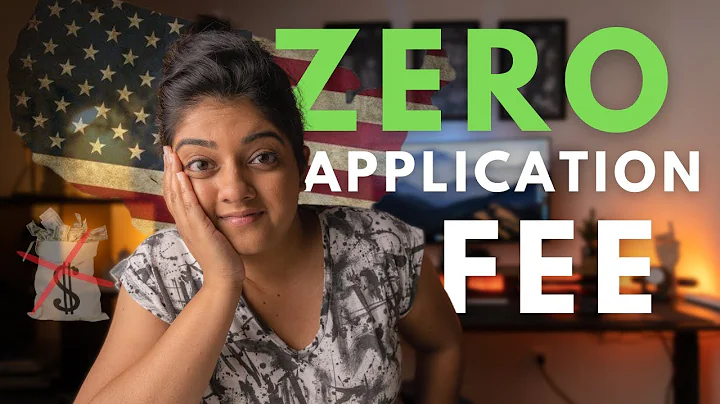Nowadays, more and more students are turning their attention to overseas higher education. Many students have turned their attention to studying in the United States. Many senior high school students have already begun planning to apply to study in the United States after the college entrance examination. So what are the ways and conditions for studying in the United States after the college entrance examination? Let’s talk about this issue with you today.

1. Ways to study in the United States after the college entrance examination
1. Already have qualified TOEFL and SAT scores
Many students are preparing for both the Chinese college entrance examination and the American college entrance examination. They will decide whether to go abroad after the domestic college entrance examination results are released. Although I don’t very much agree with this approach, because whether it is the Chinese college entrance examination or the application for undergraduate study in the United States, it is a single-plank bridge with thousands of troops and horses, and you need to go all out to prepare to achieve your ideal results more easily. However, for students who are unwilling to give up the domestic college entrance examination, the suggestion is that if you have qualified TOEFL and SAT scores, you can apply to study in the United States while preparing for the Chinese college entrance examination. Because admission results in the United States are generally available around April, and the latest admissions will not be later than June. Therefore, when you learn the results of the domestic college entrance examination, you can comprehensively compare the results of domestic colleges and universities with foreign colleges. pros and cons, and then decide whether to ultimately choose to attend college at home or abroad.
2. No English test scores
For students who decide to go abroad after the college entrance examination, the biggest problem in applying is that the application time for U.S. undergraduate programs is too hasty. At this time, the autumn deadline of most schools has already expired, and if the students do not have language scores, You can only choose undergraduate preparatory courses or dual enrollment.
The biggest difference between dual enrollment and preparatory courses is that dual enrollment does not require credits while studying language, while preparatory courses allow you to earn some credits. You can even directly enter sophomore year after completing one year of preparatory courses. However, dual enrollment also has the advantage of dual enrollment, that is, there are relatively more schools to choose from.
In addition, community colleges are also a very ideal choice. Community colleges provide teaching for the first two years of undergraduate studies. After completing the community college studies, you can transfer to a comprehensive university to complete the remaining two years of school, and you can obtain an American undergraduate degree. certificate. Moreover, most community colleges in the United States have signed transfer agreements with many well-known universities in the state. Students with a GPA of at least 3.0 in the first two years have the opportunity to transfer to the top 50 or even the top 30 schools in the United States to continue their studies.
3. Not very satisfied with the school to which they were admitted
There is also a category of students whose college entrance examination scores are not very satisfactory, but they do not want to hastily choose to go abroad. For these students, I also give a suggestion to transfer to another school. You can first study in college in China, prepare TOEFL or SAT scores at the same time, and apply to transfer to the United States during your sophomore year. The advantage of transferring is that you can generally get admitted to a school with a better ranking than applying for graduate school, and unless it is a famous school, transfer to most schools does not require SAT, which means you have to take one less test than applying for a new student.
Of course, the disadvantage of transferring is that not all credits can be transferred to the United States, and some credits will be wasted. Therefore, for students who are considering transferring, it is strongly recommended that they prepare to transfer early so that they can complete their undergraduate studies in 4 years. Most schools in the United States do not accept senior transfer students, and many schools will require students to complete 60 credits at the school before they can graduate. This means that no matter when they transfer, they generally need to study in the United States for at least 1.5 years after transfer. It takes 2 years, so if you transfer after your junior year, it will be difficult to complete your undergraduate studies in 4 years.
2. Conditions for studying in the United States after the college entrance examination
1. Academic requirements
For Chinese international students, if you want to apply for an undergraduate degree in the United States, you need to have graduated from high school. If you want to apply for a master's degree in the United States, you need to have an undergraduate degree in China, and apply for a school and major. When selecting, it should be as consistent as possible with personal career goals, educational background, work experience and hobbies, and avoid blindly pursuing rankings and popular majors.
2. English requirements
When applying to American universities, you will find that their English proficiency requirements are different, but generally you must have a TOEFL score of 75-100 to apply for an undergraduate degree, but some universities can provide it to students who do not have TOEFL scores. Dual enrollment courses provide dual enrollment in language and professional courses.
Applying for graduate school not only requires a TOEFL score of 80 or above, but may also require other relevant English scores. However, some American universities do not require GRE or GMAT for applying for graduate courses.
3. Financial requirements
Due to different schools and majors, the tuition gap in American universities is still quite large. Generally speaking, the annual tuition of public universities is about 10,000-10,000 US dollars, while the annual tuition and meals of some excellent private universities are The accommodation fee is as high as 40,000 dollars/year or more. In small towns in the central/southern United States, 6,000 US dollars of living expenses per year are enough. The demand for big cities in California and New York will be even higher.
The academic system in the United States: Bachelor's degree is generally 4 years, and master's degree is generally 2-3 years. Therefore, sufficient guarantee must be provided when applying for a student visa.
4. Material requirements
The steps to apply to study in the United States are relatively complicated, so prepare the materials you need as early as possible. PS: letters of recommendation, transcripts, certificates of deposit, personal documents/resume, IELTS/TOEFL, SAT scores, school selection, Extracurricular activities, interviews (depending on the school), portfolio and other materials.
3. College Entrance Examination Score Requirements for Studying in the United States
Starting from 2015, some American universities have also recognized the use of College Entrance Examination scores instead of SAT/ACT, but they generally also require language scores or passing an interview test. It is also worth noting that the rankings of American universities that accept college entrance examination scores are usually not very high, and they are basically universities ranked after 80 by USNews.
For example: University of Oregon, University of Tulsa, Rochester Institute of Technology, and University of Denver announced in 2019 that they would cooperate with InitialView, a third-party interview agency. Applicants can use their college entrance examination scores, participate in interviews, and submit writing samples to apply to these four universities at the same time. There is no need to submit additional TOEFL/IELTS, SAT/ACT scores.
Illinois Institute of Technology requires a college entrance examination score of Category I or above, and an English score of 120+ can participate in the registration interview. TOEFL and SAT scores are also exempted. The University of San Francisco only requires students to provide college entrance examination scores and high school scores. They also need to participate in an interview. The interview location is in Beijing. Students who meet the admission requirements will receive their admission results within a few days of the interview.
Finally, I hope everyone can be admitted to their dream school. If you want to know more about the application planning and quotation for studying abroad, please follow the editor, leave a message in the comment area or send a private message to the editor to get free one-to-one application planning and quotation for studying abroad in Macau.





















